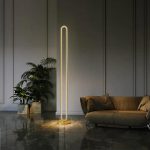Pendant lighting is a versatile and popular lighting option that combines functionality and aesthetics in various spaces. These fixtures are suspended from the ceiling using a rod, chain, or cord and are available in diverse styles, sizes, and materials. Pendant lights are suitable for multiple areas, including kitchens, dining rooms, bedrooms, and living spaces.
They can provide focused task lighting or create ambient and accent lighting effects. To maximize the potential of pendant lighting, it is important to understand the different types and their applications in various settings. Pendant lights come in numerous styles, such as traditional, modern, industrial, and rustic.
Traditional pendant lights Clubzome often feature intricate designs and are typically made from materials like brass, bronze, or glass. Modern pendant lights are characterized by sleek, minimalist designs with clean lines and geometric shapes. Industrial pendant lights have a more utilitarian appearance, often incorporating materials such as metal or reclaimed wood.
Rustic pendant lights frequently use natural materials like wood or rope, creating a warm, farmhouse-inspired aesthetic. Understanding these different styles can help in selecting the most appropriate fixture to complement a space’s overall design theme.
Choosing the Right Pendant Light for Your Space
Size Matters
The first consideration is the size of the pendant light. It’s crucial to choose a fixture that is proportionate to the space it will be placed in. A small pendant light may get lost in a large, open-concept living area, while a large pendant light may overwhelm a small dining nook.
Height and Placement
The height at which the pendant light will be hung is also crucial. In a dining room, for example, the bottom of the pendant light should typically hang 30-36 inches above the tabletop.
Lighting Type and Material
Another important consideration is the type of lighting the pendant light will provide. If the pendant light will be used for task lighting, such as over a kitchen island or workspace, it’s essential to choose a fixture that provides focused, direct light. On the other hand, if the pendant light will be used for ambient or accent lighting, a fixture with a more diffused light output may be more suitable. Additionally, considering the material and finish of the pendant light is vital for ensuring that it complements the existing decor in the space.
Creating Different Lighting Levels with Pendant Lights
One of the key benefits of pendant lighting is its ability to create different lighting levels in a space. By using multiple pendant lights at varying heights and with different types of bulbs, it’s possible to create a layered lighting effect that adds depth and visual interest to a room. For example, in a kitchen with an island, using three pendant lights at different heights can create a dynamic focal point while also providing ample task lighting for food prep and cooking.
Additionally, using dimmable bulbs in pendant lights can allow for even more control over the lighting levels in a space, making it easy to adjust the ambiance for different activities or times of day. In addition to creating different lighting levels within a space, pendant lights can also be used to direct light to specific areas or features. For example, in a living room with high ceilings, using a large, statement-making pendant light can draw attention to the seating area below and create a cozy atmosphere.
In a hallway or entryway, using multiple small pendant lights can guide the eye through the space and create a welcoming ambiance. By strategically placing pendant lights and using them to create different lighting levels, it’s possible to enhance the functionality and ambiance of any room.
Enhancing Ambiance with Pendant Lights
Pendant lights are an excellent way to enhance the ambiance of a space by adding warmth and visual interest. In addition to providing functional lighting, pendant lights can also serve as decorative focal points that contribute to the overall atmosphere of a room. For example, in a dining room, using a cluster of pendant lights above the table can create an intimate and inviting atmosphere for meals and gatherings.
In a bedroom, using soft, diffused pendant lights can create a cozy and relaxing ambiance that’s perfect for unwinding at the end of the day. The type of bulb used in a pendant light can also have a significant impact on the ambiance it creates. Warm-toned bulbs can add a cozy and inviting glow to a space, while cooler-toned bulbs can create a more modern and energizing atmosphere.
Additionally, using dimmable bulbs in pendant lights allows for even more control over the ambiance of a space, making it easy to adjust the lighting levels for different activities or moods. By carefully considering the style, placement, and bulb type of pendant lights, it’s possible to enhance the ambiance of any room and create a welcoming and visually appealing space.
Highlighting Specific Areas with Pendant Lighting
Pendant lights can be used to highlight specific areas or features within a space by drawing attention to them with focused light. For example, in a kitchen with open shelving or artwork on display, using small pendant lights with focused beams can draw attention to these features and create visual interest. In a hallway or entryway, using pendant lights to highlight architectural details or artwork on the walls can add depth and character to the space.
Additionally, using pendant lights with adjustable arms or swiveling heads allows for even more control over where the light is directed, making it easy to highlight specific areas or features within a room. In addition to highlighting specific areas within a space, pendant lights can also be used to create visual balance and symmetry. For example, in a large living room with high ceilings, using two matching pendant lights on either side of a seating area can create a sense of balance and cohesion.
In a dining room with an elongated table, using multiple pendant lights evenly spaced above the table can create visual harmony and draw attention to the entire length of the table. By strategically placing pendant lights and using them to highlight specific areas or create visual balance within a space, it’s possible to enhance the overall design and functionality of any room.
Incorporating Pendant Lights into Your Decor
Complementing Your Decor
In a modern kitchen with sleek cabinetry and stainless steel appliances, pendant lights with clean lines and minimalist design can enhance the overall contemporary look. In a rustic dining room with exposed wooden beams and farmhouse-style furniture, pendant lights made from natural materials like wood or rope can add to the cozy and inviting atmosphere.
Color and Finish Considerations
The color and finish of the pendant lights are also important factors to consider, as they need to blend seamlessly with the rest of your decor.
Functionality and Purpose
In addition to complementing your decor, pendant lights should also contribute to the overall functionality of your space. For instance, in a workspace or kitchen where task lighting is essential, pendant lights with focused beams and adjustable arms can provide practical illumination for cooking or working. In a bedroom or living area where ambient lighting is key for creating a relaxing atmosphere, pendant lights with soft, diffused light output can contribute to the overall comfort and coziness of the space.
Maintenance and Care for Pendant Lights
Proper maintenance and care for pendant lights are essential for ensuring that they continue to function well and look great for years to come. Regular cleaning is important for keeping pendant lights looking their best and maintaining their performance. Dusting the fixtures regularly with a soft cloth or duster can help prevent dirt and grime from building up on the surfaces.
Additionally, cleaning any glass components with a gentle glass cleaner can help keep them clear and free from smudges or streaks. In addition to regular cleaning, it’s important to inspect pendant lights periodically for any signs of wear or damage. Checking that all electrical connections are secure and that bulbs are functioning properly can help prevent potential safety hazards.
If any components appear loose or damaged, it’s important to address these issues promptly to ensure that the fixtures continue to function safely and effectively. Finally, if your pendant lights have any adjustable components such as swiveling heads or adjustable arms, it’s important to use these features carefully to prevent excessive wear or damage. Avoid forcing any moving parts beyond their intended range of motion, as this can cause premature wear and affect the functionality of the fixtures.
In conclusion, understanding how pendant lighting works and how it can be used in different spaces is essential for making informed decisions when choosing fixtures for your home. By carefully considering factors such as size, style, lighting type, and placement when selecting pendant lights, it’s possible to enhance both the functionality and ambiance of any room. Additionally, incorporating pendant lights into your decor thoughtfully and maintaining them properly can ensure that they continue to look great and perform well for years to come.
With their versatility and ability to add both style and functionality to any space, pendant lights are an excellent lighting option for any home.


